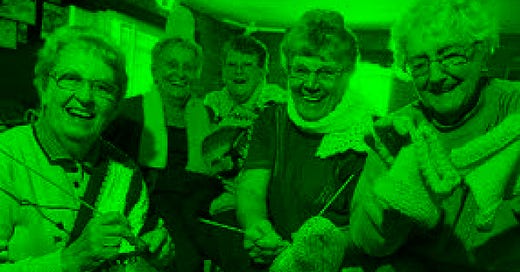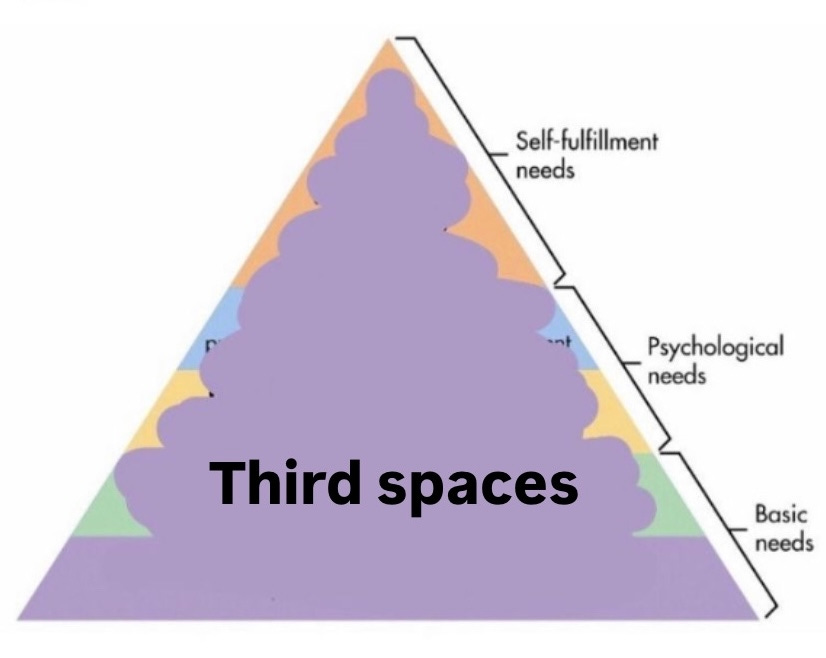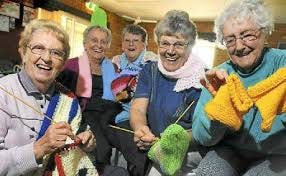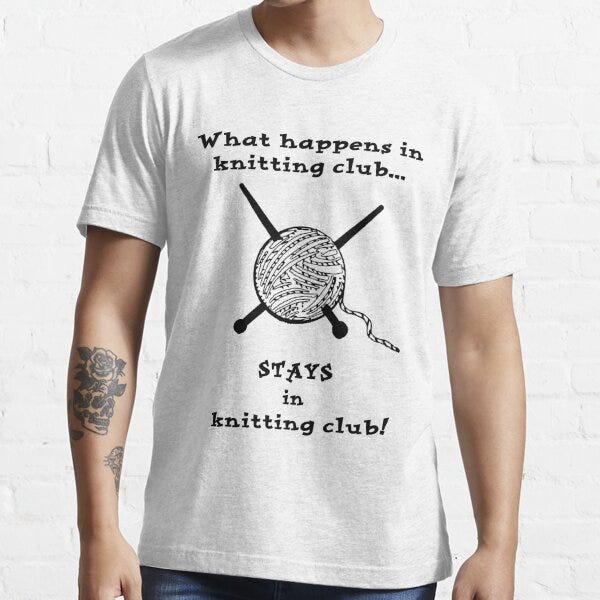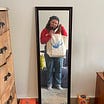Yes, New York Knitting Clubs are Crafting “New” Third Spaces
Dough! But Mail! #2: Surviving City Life
But did anyone ask why the third spaces went away in the first place?
A couple weeks ago, Forbes published an article about the many craft and hobby clubs cropping up around NYC recently arguing these clubs are “crafting new third places” for young New Yorkers. If you’ve lived in New York for any length of time, you’ve definitely heard about any number of experimental social clubs claiming to facilitate “community” and allow people to meet IRL.
The article mentions RecCreate, a Brooklyn crafting club targeted towards young professional women (which I’ve visited for Ella Emhoff’s now-on hiatus Soft Hands Knit Club), Brooklyn Charm, a semi viral jewelry charm store where guests can customize their own pieces, and art cafe Happy Medium—all places where young New Yorkers can gather and “craft” at varying levels of skill without the burden of purchasing tools and supplies. (For what it’s worth, you can also rent craft kits from NYPL and join free craft and knitting circles at several local branches).
At first glance this article and its assertions are completely unobjectionable, even moderately compelling. But upon closer inspection it becomes clear that this is not a particularly ambitious claim. A “third place” simply refers to a place that is neither home or work, apparently including everything from Soho House to the sidewalk in front of my apartment. Meaning Madison Square Garden, the public library, Yankee Stadium, Rockaway Beach, the 7 train to Forest Hills, your local church/mosque/shul/temple, the Times Square Margaritaville—all third places.
Given their ubiquity, then, it’s worth asking—why do we need so-called “new” third places? Where did the old third places go? Why is their supposed return something to celebrate?
Ray Oldenburg, the urban sociologist who originated the idea of the “third place,” argued that people living in suburbia cry out “for the means to gather easily, inexpensively, regularly, and pleasurably.” According to him, we all need cheap, moderately entertaining places to escape our passive aggressive roommates (or romantic partners).
My neighborhood in Hamilton Heights has no shortage of places like these, but they don’t resemble the aesthetic crafting clubs hosted by mid-twenties upper middle class girls in mixed-use industrial buildings. Rather, the abuelas in my building prefer to hang out on the sidewalk. Every night (weather permitting), the abuelas in my neighborhood drag camping chairs out to the street and chat for hours, sometimes with food, sometimes with a speaker, but more often than not, they just chill.
This is Oldenburg’s ideal image of a third place—informal, inexpensive, and hyper-local.
Don’t mistake the easy informality of these sidewalk hangs for a lack of intentionality, however. Third places like these don’t just emerge spontaneously, which is why they don’t exist in every neighborhood. (You’re unlikely to find abuelas in camping chairs in Hudson Yards, for example.)
Our neighborhood abuelas are able to relax on our sidewalk because our neighbors are friendly and know each other; because our neighborhood isn’t excessively patrolled by increasingly militarized NYPD officers, and because our streetlights and sidewalk are fairly well-maintained and usually not completely obstructed by garbage.
Spaces like this are rapidly disappearing in and around New York City as privatization shrinks public space, increases police surveillance, and incentivizes the Adams administration to divest from communities fighting gentrification. Oldenburg connects the decline of third places to inflation and affordability crises, arguing that “in the absence of informal public life, living becomes more expensive”—something young professional young New Yorkers know quite well.
Given these conditions, we can’t kid ourselves that expensive and irregular arts and craft events—regardless of how fun and fulfilling they can be—can ever achieve the level of informality and accessibility that Oldenburg describes, or fight the problems that led to shrinking public space in the first place. Yes, technically these kinds of events do qualify as a type of third place for a person with a certain level of means and privilege, but we should push back on the idea that these kinds of events can ever be an adequate replacement for a no-frills inexpensive local bar or set of camping chairs on a street corner.
While these trendy, highly stylized, lightly viral crafting clubs aren’t perfect replacements for more informal third places, there’s nothing inherently wrong with them—I enjoy them quite often. We just need to be honest about which aspects of the crisis of declining third spaces they’re equipped to fix and find creative (pun intended) means of addressing those they aren’t.
All this to say—Dough Mag wants to hang out with you—informally, inexpensively—and chat (read: complain) about our finances. We’ll commiserate, compare notes on our “grind sets,” gossip about who is *actually* maxing out their 401k contributions, and convince each other not to go to grad school. (Because we already did.)


